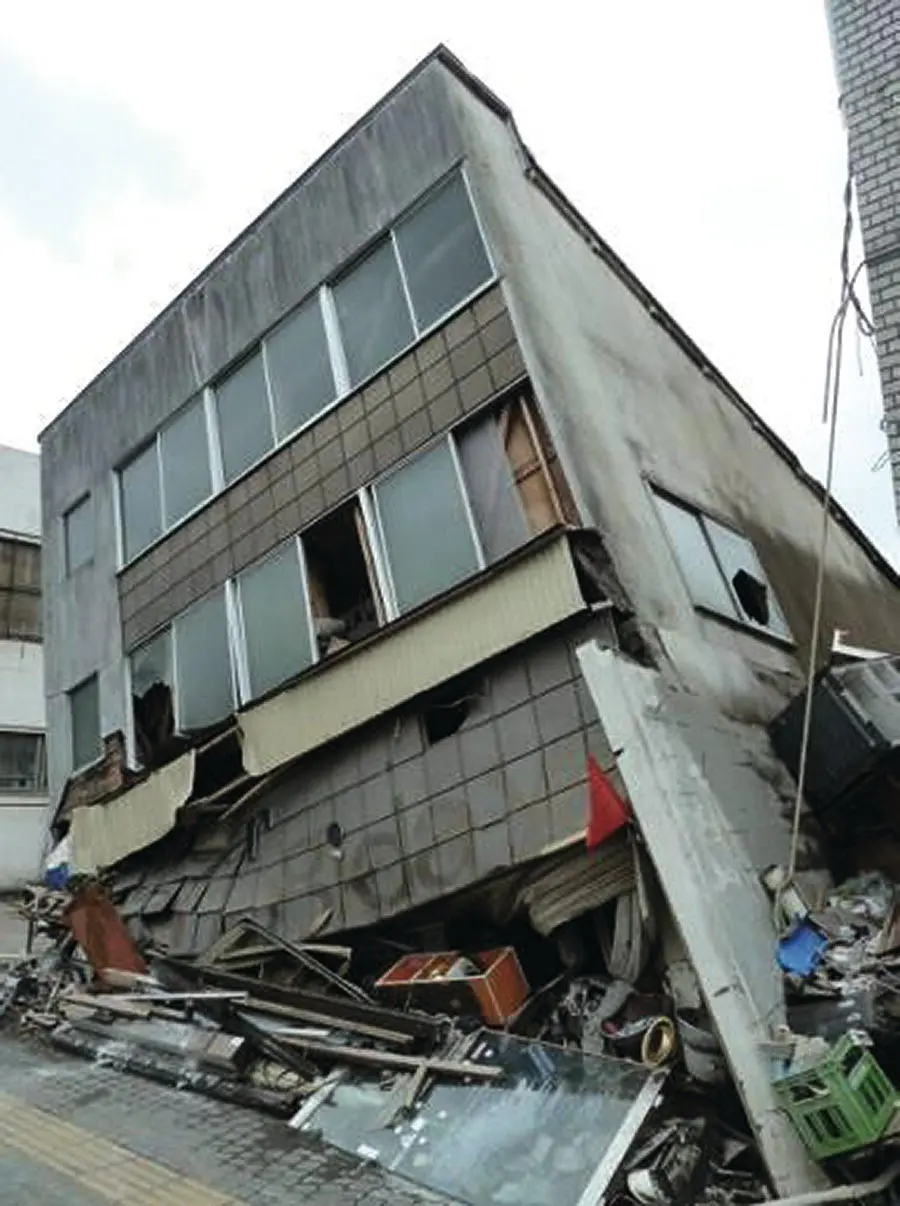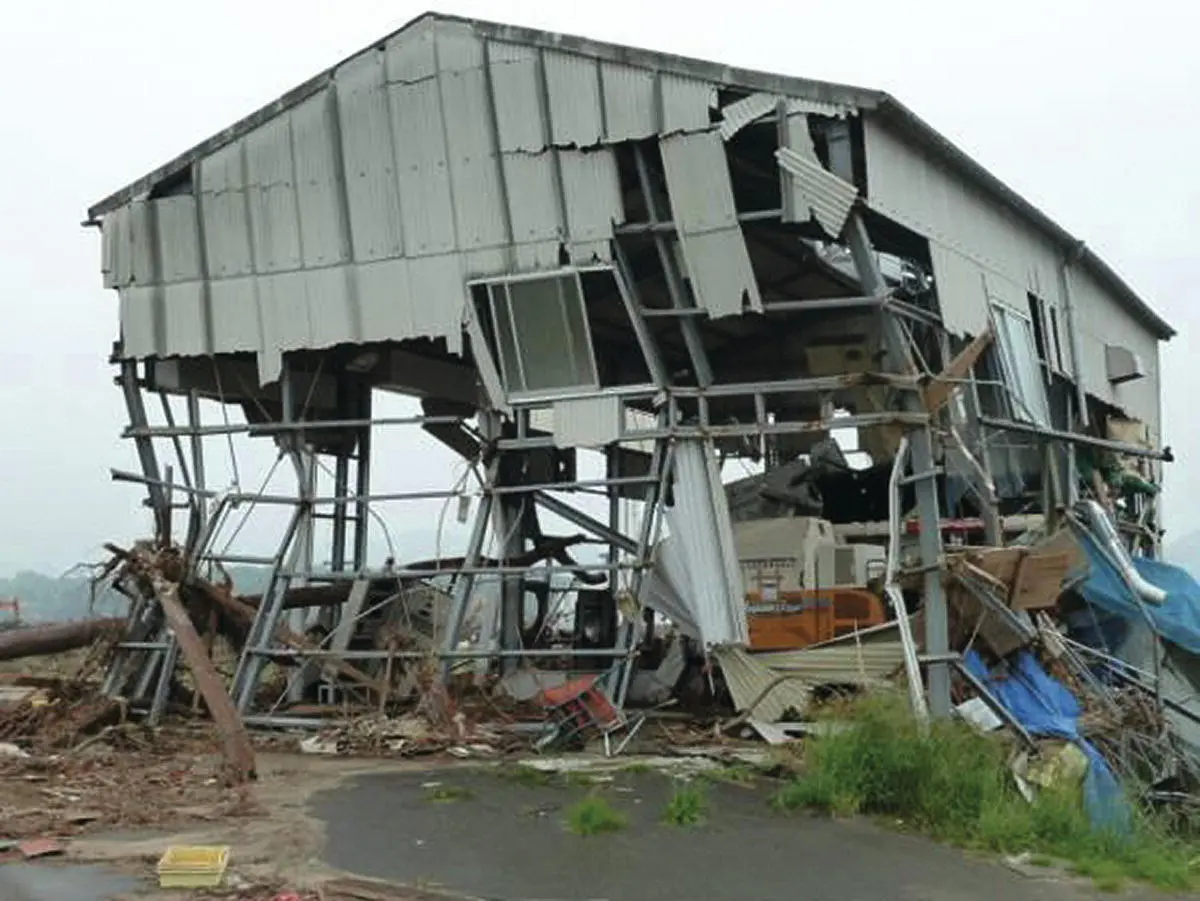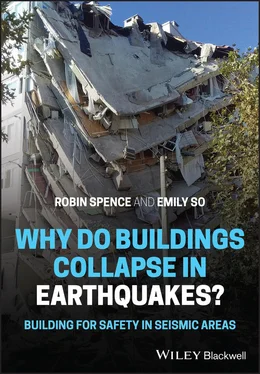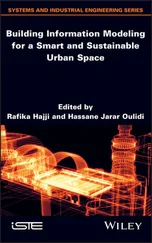Less than three weeks after the Christchurch earthquake, a huge Mw 9.1 earthquake occurred at 14.46 local time in the Japan trench off the coast of Tohoku in north‐east Japan. The event had the largest magnitude recorded in Japan since the beginning of instrumental seismology around 1900. Intense and damaging ground motion, lasting as much as four minutes, was felt over most of northern Japan, and the earthquake triggered a tsunami, which was damaging over about 650 km of the coastline of four regions (Sanriku, Miyagi, Joban and Kanto). The tsunami toppled sea defences, inundated more than 500 km 2of land and destroyed many settlements and towns along the coastline. The effects of the tsunami also led to the failure and release of radioactive material from two reactors of the Fukushima Daiichi nuclear power station, requiring a massive and prolonged evacuation of hundreds of thousands of residents from within 20 km of the site.
Direct losses from the event are thought to be in excess of $215bn, making this the world's costliest disaster, and indirect losses from the nuclear reactor failure continue to rise. The total casualties resulting from the event have been estimated over 18000. The vast majority (>90%) of these were deaths by drowning, directly caused by the tsunami, but significant numbers of casualties (>4%) were crush injuries caused by the collapse of buildings over a wider area. As in Christchurch, the scale of the damage was largely because the buildings and the sea defences were not built to withstand the effects of an earthquake of that magnitude. At that time, the maximum magnitude envisaged in the Japan trench, on which building and coastal defence design was based, was Mw8.4.
The damage caused by the earthquake and tsunami was studied by several reconnaissance teams. The summary of damage to buildings presented here is largely based on reporting by the UK's EEFIT team (EEFIT 2011b). The building stock in the 20 towns and cities affected by ground shaking (but not the tsunami) which were visited by the EEFIT team consisted of an estimated 81% timber‐framed structures, 14% RC structures and 4% steel framed structures. In surveys conducted by EEFIT in the areas where the ground shaking was seriously damaging, as many as 25% of all buildings were recorded as unsafe and another 30% as damaged (EEFIT 2011b). Each of the three major building types was equally affected, though damage to RC buildings was concentrated on those built before improved earthquake‐resistant design regulations were introduced in 1981.

Figure 2.15Typical damage in tsunami‐affected region. Timber frame building in Kamaishi City at a location with a maximum of 7 m inundation.
Source: EEFIT. Reproduced with permission.

Figure 2.16Typical damage in tsunami‐affected region. Steel frame building in Yamamoto‐cho, Miyagi Province which was struck by a tree trunk in the debris flow.
Source: EEFIT. Reproduced with permission.
In the coastal areas affected by tsunami inundation, damage was immense, but extremely variable, depending on inundation depth, flow velocity, debris entrainment in the flow and sheltering. Inundation depths varied up to a maximum of 16 m at Onagawa town, where most buildings were destroyed, and 12% of the population living in the inundated zone were killed. The structural frames of RC and steel frame buildings generally survived, except where impacted by heavy debris, but damage to cladding and non‐structural elements was extensive ( Figures 2.15and 2.16). Timber‐framed buildings were, however, frequently destroyed and sometimes swept from their foundations by the force of the tsunami at inundation depths of 3–4 m or more.
Overall, data collected by the National Police Agency (NPA) in November 2011 (NPA 2011) showed that 120 157 buildings were totally destroyed and a further 830 000 buildings had been damaged.
2.2.10 The 25.4.2015 Gorkha Nepal Earthquake: Mw7.8, 8831 Deaths
This Mw7.8 event occurred on 25 April 2015 at 11.56 a.m. local time, with an epicentre near the town of Gorkha, 80 km west of Nepal's capital city Kathmandu, and with a focal depth of 19 km. It was followed by an intense series of aftershocks over several months, with their epicentres spread over a length of 200 km east and west from the main shock. The largest of these aftershocks, on 12 May, had a magnitude of Mw7.3, and three others had magnitudes greater than Mw6.0. The earthquakes resulted from ruptures on the Himalayan arc, a highly active fault zone associated with the subduction of the Indian plate to the south under the Eurasian plate to the north, the process which is responsible for the building of the Himalayan mountain range. The cumulative casualties and damage from this sequence of events was immense. Over half a million houses were destroyed, as were many government and heritage buildings, as well as roads, bridges and water supply systems. Damage was increased by many landslides, and rescue was hampered by the inaccessibility of many affected villages. The Nepal Government's post‐disaster needs assessment report (EEFIT 2015; EERI 2016; Government of Nepal 2015) estimated that there were over 8790 deaths and 22 300 serious injuries caused by the earthquake, spread over 14 districts. The death toll subsequently rose to an estimated 8831 in Nepal. The cost of the disaster has been estimated to be around US$7bn.
Observations on building construction and damage are taken from the reports of the EEFIT and EERI reconnaissance missions (EEFIT 2015; EERI 2016). According to these reports, in both urban and rural areas of Nepal, masonry construction predominates. In the urban areas, many buildings are of three to four storeys in height, and built in close proximity to each other. Masonry is constructed using fired brick, which is laid in a lime or mud, sometimes cement, mortar. Floors and roof structures were traditionally of timber (floor planks on joists), and in better‐built houses these were connected by pegs to wall plates to prevent overturning (EEFIT 2015). More recent masonry buildings have RC floor and roof slabs. Urban areas also have a proportion of RC frame buildings, with masonry infills. Few are built according to the Nepalese code of practice or guidelines for concrete buildings, and there is no inspection (EEFIT 2015).
In rural areas masonry construction is low‐rise, using local stone or brick, with a lime or mud mortar. As in urban areas, floors have timber beams and roofs use timber beams or trusses covered with a lightweight tiles or metallic sheet.
Although better‐built structures survived the earthquake with minor damage, the earthquake exposed many weaknesses in building practice. Typical damage to masonry buildings included the separation of outer and inner layers of masonry walls because of poor connection within the walls, out‐of‐plane overturning of walls because of poor connections at corners and poor wall‐to‐floor connection ( Figures 2.17and 2.18). Many of the casualties were caused by the overturning and collapse of masonry walls. The performance of RC buildings was better than that of masonry buildings, and the majority of those observed by EEFIT, both in Kathmandu and throughout the affected area, showed little or no damage (EEFIT 2015). However, the EERI team (EERI 2016) noted many deficiencies leading to damage or collapse, which they attributed both to problems with building configuration – large overhangs, trapezoidal plans and soft storeys, as well as to poor construction standards. Pounding of adjacent structures with insufficient gaps was also a common source of damage.
Читать дальше














